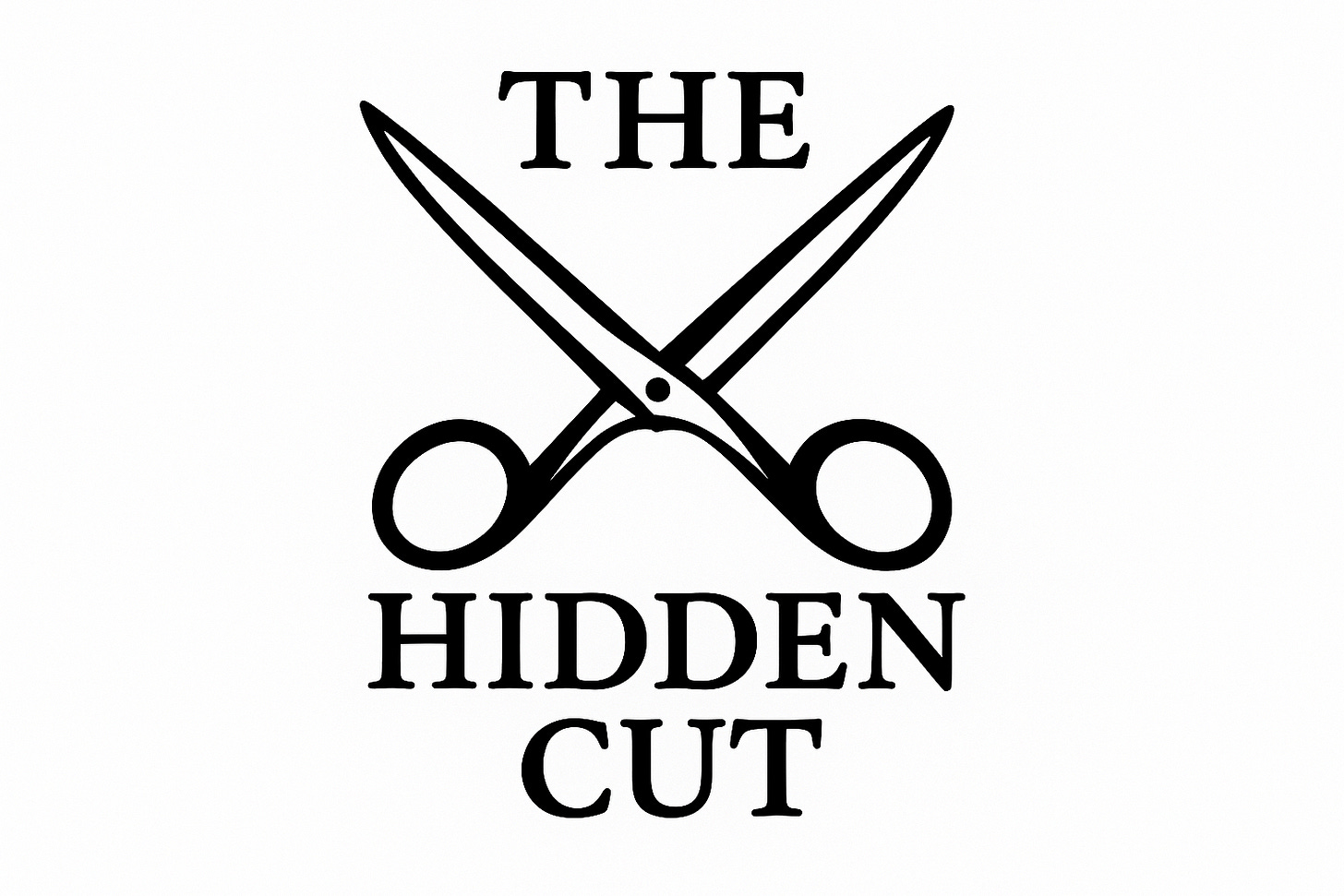The Hidden Cut - S1E6: The Choice Cut
A cut made for profit. A silence held for decades. And a choice reclaimed.
I think the first time I really thought about circumcision—not just accepted it, or assumed it, or filed it away as “just what people do”—was when I learned that a friend of mine hadn’t circumcised his sons.
He was about fifteen years older than me, someone I admired—and by all accounts, not the type to overtly stray from the mainstream. Because up until that moment, every man I’d ever heard talk about it said some version of the same thing:
“I want my son to look like me.”
And even back then, that never totally made sense to me. If I really sat with it, I didn’t understand the logic. Were sons checking? Was anyone comparing? Was it really about them, or was it about something else?
That moment planted a seed. And years later, it’s clear: that seed cracked open a whole world of questions—about tradition, masculinity, conformity, pain, and the strange stories we tell ourselves to make the uncomfortable feel normal.
✂️ Quick cut: If you’re enjoying this, become a paid subscriber. These essays take time to research and write—and your support keeps the scissors sharp.
Subscribe to follow the thread—from laugh tracks to foreskins to the emotional fallout we’re only just beginning to name.
In this episode, we’re going to talk about what happens to the foreskins themselves. Where they go. Who profits. And why this piece of flesh—discarded, forgotten by most—might be the most valuable part of the entire operation.
The Forgotten Flesh
The truth is, we rarely ask what happens to the foreskin. The procedure ends, the baby cries, the nurse tidies up, and everyone moves on. We don’t ask where it goes because we’re not encouraged to think of it as something valuable. It’s treated like medical waste—just a snip of skin.
But it’s not just a snip of skin.
Foreskin is incredibly rich in fibroblasts—cells that help generate collagen and grow new tissue. It’s potent. And it’s profitable.
After circumcision, many hospitals send the removed foreskin to biomedical companies. These companies culture the cells, replicate them in labs, and sell the resulting materials for use in everything from burn treatment and diabetic ulcer care to—you guessed it—cosmetic anti-aging products.
That’s right. Some of the most expensive face creams and eye serums on the market proudly advertise their “growth factors,” their “rejuvenating properties,” their “youth-enhancing” powers—without ever telling you where the source material came from.
Here’s the twist: these foreskins can be cultured for decades. One infant foreskin can produce literal millions of dollars in regenerative products.
Which begs the question: if this material is so valuable… who’s profiting? Is any of that wealth making its way back to the families? To the boys who were cut?
Of course not.
We don’t talk about this because it’s uncomfortable. It feels like a conspiracy theory, until you realize—it’s just a well-oiled, quietly profitable system.
And systems like this only survive when the rest of us don’t ask questions.
From Operating Room to Boardroom
The companies that process foreskin-derived fibroblasts don’t exactly hide what they’re doing—but they don’t go out of their way to explain it, either. It’s all cloaked in science-speak: “neonatal fibroblast technology,” “human-derived growth factors,” “proprietary cell cultures.”
But when you look closely, a few names start to pop up again and again.
Take Advanced Tissue Sciences, one of the early pioneers in foreskin fibroblast research. Back in the ’90s, they began harvesting cells from infant foreskins to develop artificial skin. Their patented process became the foundation for products used in burn units, wound care, and eventually—through partnerships with cosmetic companies—in luxury skincare.
Then there’s Organogenesis, AlloSource, Apligraf, and SkinMedica—the last of which was acquired by Allergan, the makers of Botox, for $350 million in 2012. SkinMedica’s flagship product line, TNS Essential Serum, proudly touts its “Human Fibroblast Conditioned Media” as the star ingredient.
Nowhere on the label does it say: “Originally harvested from the penis of a newborn baby.”
These foreskin-derived cells are prized because they’re young, vital, and undamaged by time or environmental exposure. And unlike embryonic stem cells, which come with heavy ethical scrutiny, neonatal foreskin cells are considered “discarded tissue.” That classification makes them gold to biotech.
And then there’s Oprah.
In 2013, she promoted a high-end facial—known as the “Hollywood EGF Facial”—on her show. The key ingredient? Foreskin fibroblasts. It was dubbed the “penis facial,” half-jokingly, though the industry rarely laughs about its profits.
But Oprah wasn’t the only one spotlighting it.
On an episode of The Ellen DeGeneres Show, Sandra Bullock talked about her love of a certain skin cream that Ellen joked was made from “the foreskins of Korean babies.” Sandra laughed, slightly mortified, and clarified that it was a serum derived from something harvested from the foreskin—though no one got more specific. The audience laughed. The joke landed. The topic moved on.
Because it always does.
In a different context, if someone said a product was made from discarded parts of an infant, grown in a lab, and sold for luxury use, we might recoil. But in this context—wrapped in celebrity banter and a pretty bottle—it becomes high-end skincare.
We live in a culture where babies are cut without their consent, and the most sensitive part of their bodies is sold, repurposed, and rubbed on the faces of the rich and famous.
It’s not a conspiracy. It’s just capitalism—applied to the body.
The Body Forgotten, The Spell Breaking
For generations, American parents didn’t question circumcision. It was presented as clean. Normal. Necessary. Doctors recommended it. Hospitals folded it into birth routines. Insurance covered it.
And if you’re a man who was circumcised as a baby, you probably don’t remember it. That’s by design.
We don’t talk about the screaming. Or the bleeding. Or the trauma. We tell ourselves babies don’t feel pain, even though modern research proves otherwise. We don’t talk about the protective function of the foreskin, or how the penis was meant to remain intact. We don’t talk about the nerve endings.
Instead, we’re given scripts:
“It’s cleaner.”
“It’s safer.”
“He should look like his dad.”
“He won’t remember anyway.”
But memory is a strange thing. Trauma can live in the body long after the mind forgets.
So what happens when the spell starts to break?
In the last few decades, a quiet shift has been taking place. Rates of circumcision in the United States—once as high as 80%—have been dropping. More parents are choosing to leave their sons intact.
Why? Because they’re asking questions. Because they’re learning that the rest of the world doesn’t routinely do this.
Because they’re realizing their parents were seduced by a new god—Convenience—who promised surgery as a shortcut to cleanliness.
Because information is spreading—online, through documentaries, through midwives, doulas, and doctors brave enough to speak out.
And because the story is changing.
Once the default, circumcision is now a choice—and for many, an increasingly difficult one to justify.
In this segment, we’re going to take a hard look at how circumcision became the American norm. Who sold it. Who benefited. And what began to unravel when people finally asked: “Wait… why are we doing this at all?”
The Great American Forgetting
The rise of circumcision in America wasn’t organic. It was engineered.
In the late 1800s, Victorian doctors began prescribing circumcision as a cure for… well, everything: bedwetting, epilepsy, paralysis, even masturbation. The medical literature of the time is full of eerie phrases—“corrective surgery,” “moral hygiene,” “self-abuse prevention.”
This was the birth of medicalized morality. And it stuck.
By the early 1900s, as hospital births became the norm, circumcision became standard operating procedure—part of the “clean break” from the old world. In truth, it had very little to do with health and everything to do with control.
It was a rite of passage… that no one was allowed to remember.
And that’s what makes it so hard to talk about: the very people who experience it firsthand—the men—are usually too young to remember it at all. So how could it be traumatic?
But trauma isn’t always remembered in words. Sometimes it lives in the body, in unexplained tension, in disconnect, in dysfunction. And for the millions of men circumcised in infancy, there's a deep, unspoken paradox: you are the victim of something you were taught to defend.
You're told it was for your own good. That it made you cleaner, better, more normal. That to question it now is ungrateful—or worse, unmanly.
And so the spell held. For decades.
Parents made the choice because doctors told them to. Doctors did it because hospitals expected it. Hospitals billed it because insurance paid for it. And no one talked about the pain. Or the blood. Or the ethics. Or the profit.
The American model of circumcision wasn’t overtly a religious act. It was a system. A business. And like any system, it depended on silence. It depended on forgetting.
But slowly, over the last two generations, that silence has been breaking.
Thanks to the internet, stories began to circulate. Men began to ask questions they were never supposed to ask: What was done to me? Was it necessary? What was taken from me? What would it mean to remember?
Because to truly question circumcision is to question everything: authority, masculinity, medical ethics, even your own family’s choices. And yet, more and more people are willing to do it.
Because when you pull back the curtain and realize the body you live in was altered without your consent—possibly for someone else’s profit—it’s hard not to wonder:
What else have I been told to forget?
What Was Taken, What Remains
The first time a man allows himself to really feel the weight of what was done to him, there’s often silence.
Not the kind that comes from peace—but the kind that comes from shock. From suddenly realizing you were part of something you never agreed to.
For many, that silence gives way to anger. Grief. Sometimes shame. But underneath all of it, there's a question most are too afraid to say out loud:
If I didn’t consent to this, then who did? And why was that enough?
There’s no ceremony to mark what was lost. No words spoken to honor the body as it was. No acknowledgment that a permanent decision was made before a name was even chosen.
And yet, in spite of that… something remains.
There is a generation rising that is asking harder questions. That is no longer afraid of discomfort. That is pulling back the curtain, piece by piece, and saying: “This ends with me.”
Some of them are fathers now. And when their sons are born, they don’t hand over their bodies. They hold them close. They keep them whole.
This episode began with a memory—of a man who made a quiet choice not to cut his sons. That choice rippled outward. It made me think. And maybe now, it’s making you think too.
Because every spell has a breaking point. And sometimes, all it takes is someone asking a question no one else is willing to say out loud.
In the next episode, the American man steps into the spotlight—just long enough to wonder if he’s ever really been seen.
Until then, I’m Lisa. And this… is The Hidden Cut—a series about what’s been removed, revised, and left on history’s cutting room floor.
🎬 Continue the Series
← Previous Episode: The Reflex Cut
→ Next Episode: The Recut
📂 Full Episode Guide: Cold Open
Think something got left on the cutting room floor?
Add your notes below—we’re still editing in real time.









Whoa